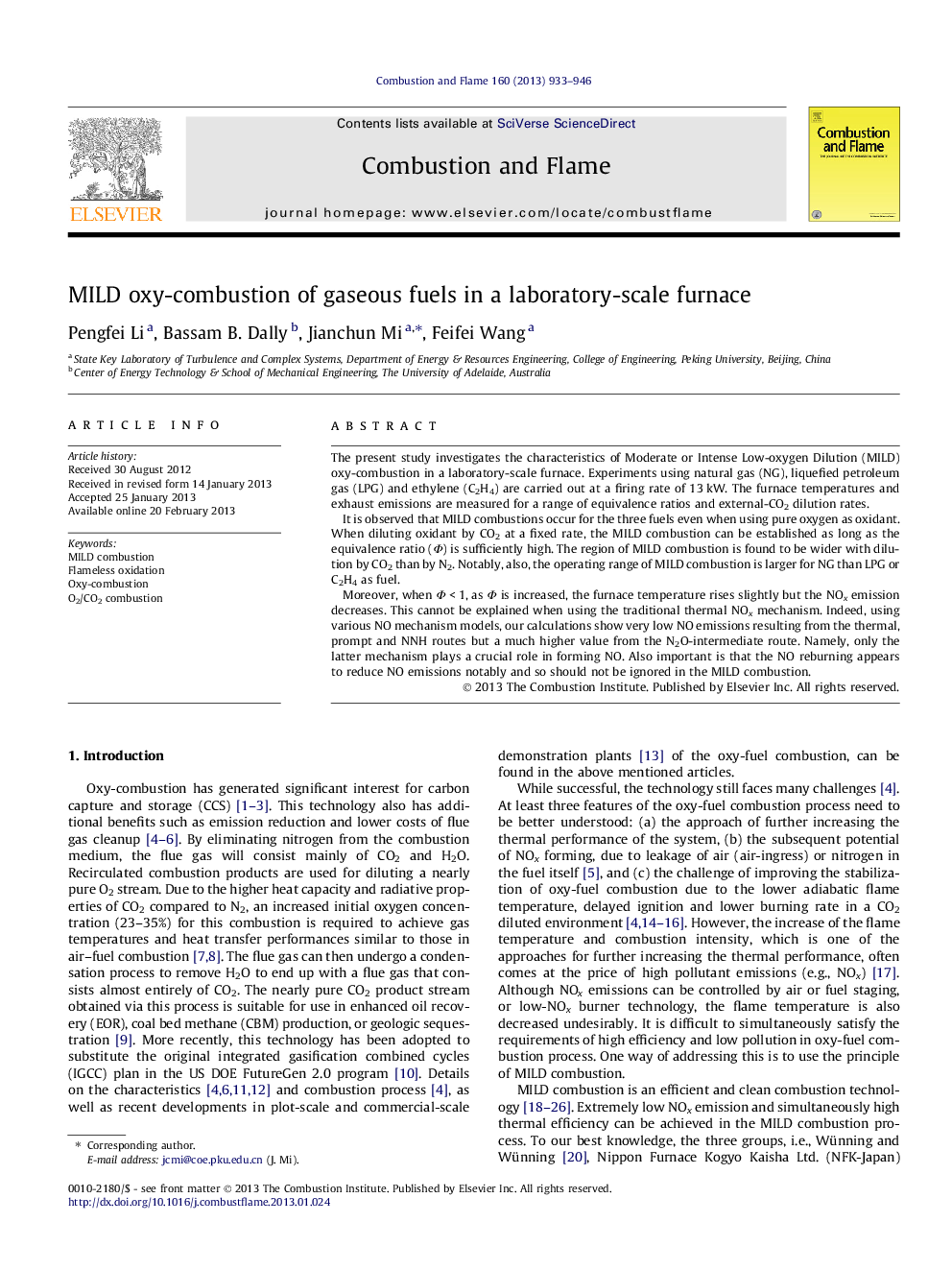| Article ID | Journal | Published Year | Pages | File Type |
|---|---|---|---|---|
| 166450 | Combustion and Flame | 2013 | 14 Pages |
The present study investigates the characteristics of Moderate or Intense Low-oxygen Dilution (MILD) oxy-combustion in a laboratory-scale furnace. Experiments using natural gas (NG), liquefied petroleum gas (LPG) and ethylene (C2H4) are carried out at a firing rate of 13 kW. The furnace temperatures and exhaust emissions are measured for a range of equivalence ratios and external-CO2 dilution rates.It is observed that MILD combustions occur for the three fuels even when using pure oxygen as oxidant. When diluting oxidant by CO2 at a fixed rate, the MILD combustion can be established as long as the equivalence ratio (Φ) is sufficiently high. The region of MILD combustion is found to be wider with dilution by CO2 than by N2. Notably, also, the operating range of MILD combustion is larger for NG than LPG or C2H4 as fuel.Moreover, when Φ < 1, as Φ is increased, the furnace temperature rises slightly but the NOx emission decreases. This cannot be explained when using the traditional thermal NOx mechanism. Indeed, using various NO mechanism models, our calculations show very low NO emissions resulting from the thermal, prompt and NNH routes but a much higher value from the N2O-intermediate route. Namely, only the latter mechanism plays a crucial role in forming NO. Also important is that the NO reburning appears to reduce NO emissions notably and so should not be ignored in the MILD combustion.
